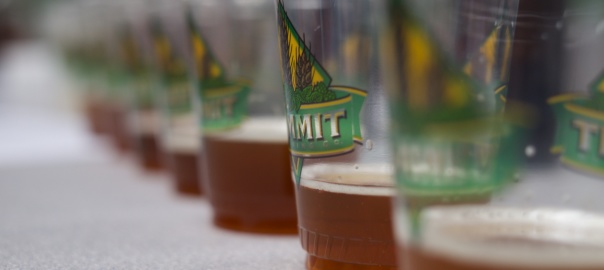Introduction
How do different brewers and brew systems affect the final beer produced? This is the question. A mashtun’s design on efficiency, boil off rates affecting hop utilization, chillers, ferment control, etc. Gravity and bitterness may be enough to significantly change a beer. This experiment will show how wide the margin is, or isn’t.
Purpose [& Hypothesis]
The purpose is to judge the variance of the final beers. How wide or how narrow will it be? The hypothesis is that no two beers will be the same, or close enough to not distinguish between them.
Methods
Each brewer will brewer on their own system in the way they feel the most comfortable to meet the recipe guidelines. Each brewer will record their brewday in detail. A records sheet will be provided and is expected to be filled out in full.
Controls
Each participant will use the same recipe and should stick strictly to it.
Golden Falcon Pale Ale |
|
|
Grains for a 5.5 Gallon Batch @ 65% Eff |
|
|
10 lbs Golden Promise |
|
|
1 lbs Golden Naked Oats |
|
|
Hops |
|
|
.5 oz Falconers Flight |
FWH |
|
.5 oz Falconers Flight |
15 min |
|
.5 oz Falconers Flight |
10 min |
|
.5 oz Falconers Flight |
1 min |
|
Yeast |
|
|
Danstar |
bry-97 |
|
Water |
|
|
Kandiyohi |
8.25 Gallons |
|
Extras |
|
|
Super Moss |
.25 tsp @ 10 min |
|
Brew Specs |
|
|
Mash thickness |
1.25 |
|
Mash |
Mash Temp: 152 – 4 gallons |
|
Batch Sparge |
Water Temp: 175 – 4.25 gallons |
|
Boil |
60 min |
|
IBU |
33 |
|
SRM |
5 |
|
OG |
1.048 |
|
Ferment Target |
66 Degrees |
|
FG |
1.007 |
|
% ABV |
5.30% |
Variable
Brew system, Brewer, Cellar Practices, Packaging.
Results
The final 9 beers were gather for a tasting at our monthly meeting. Each participant was given a sample of each beer. 100% of the membership agreed that a number of the beers where indistinguishable from others. While some were the same, many were also different.
Discussion
The beers that were the same had very similar cellar and packaging practices, temp control, fining, kegging. The beers that were different used a different process or ran into an issue. This experiment showed that two brewers, following the same recipe and using similar cellaring and packaging techniques can produce a very similar beer. While this may not seem exciting or surprising it is a good baseline. It shows that future experiments can be valid without incredibly strict variable controls as long as steps, processes and challenges are recorded and communicated.
